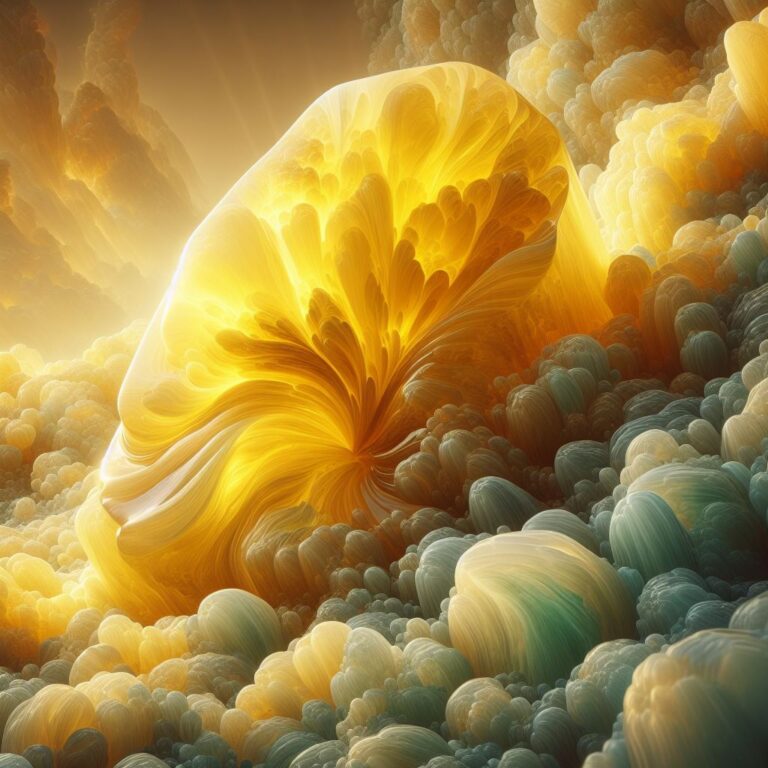Central Heterochromia Spiritual Meaning: A Window to the Soul
Central heterochromia is a rare and stunning condition where the iris contains two distinct colors. While on the surface it may seem like a simple genetic anomaly, many cultures and spiritual traditions believe central heterochromia holds a deeper meaning.
In this extensive guide, we’ll explore the mystical significance behind central heterochromia, common myths and folklore, and what it reveals about your soul’s journey. Discover how this phenomenon is viewed across different cultures and tap into the hidden abilities it may awaken within you.
Key Takeaways
- Central heterochromia is a rare eye condition where the iris has two different colors. It’s caused by a lack of melanin pigment in part of the iris.
- In ancient cultures like Egypt, Native American tribes, Celts, and Greece, central heterochromia was seen as a mark of the gods or a sign of mystical abilities.
- Some modern spiritual perspectives also associate central heterochromia with psychic gifts, magical abilities, and being a “lightworker” or “old soul”.
- Common myths suggest central heterochromia enables psychic senses, seeing auras, dimension jumping, and angelic guidance.
- The specific eye colors may reflect personality traits and soul gifts, like compassion, wisdom, strategy, and inspiration.
- The spiritual meaning of central heterochromia is deeply personal. It can symbolize inner balance, limitless potential, and a bridge between worlds.
- While the myths differ across cultures, central heterochromia ultimately represents the mystical possibilities within each person according to spiritual traditions.
What is Central Heterochromia?
Central heterochromia refers to when the iris contains two distinct colors, with one color around the pupil and a different color on the outer part of the iris.
For example, someone with central heterochromia may have a hazel or brown inner ring with a blue/green outer ring. It differs from complete heterochromia iridum where each eye is a totally different color from the other.
According to medical experts, central heterochromia is caused by a lack of melanin (pigment) in one part of the iris. It may be inherited genetically or develop later in life due to certain medications or injuries.
It’s estimated that central heterochromia occurs in around 1% of the population. While it’s relatively rare, it’s more common than complete heterochromia where each eye is a different color.
Some famous people with central heterochromia include Mila Kunis, Henry Cavill, Kate Bosworth, Alice Eve, and Alexander the Great.

Symbolic Meaning in Ancient Cultures
For centuries, ancient cultures have ascribed deep symbolic meaning to central heterochromia. Let’s explore some of the mythology and folklore surrounding this phenomenon:
Egypt
In ancient Egypt, central heterochromia was seen as a mark of the gods. Those born with it were thought to be “Horus-eyed”, bearing the mark of Horus, the Egyptian god of the sky and light.
Egyptians believed these individuals had the gift of “sun sight”, enabling them to see beyond the mundane world into the realm of the gods.
Native Americans
Some Native American tribes considered central heterochromia to represent balance and harmony. The two eye colors were thought to unite and balance the physical and spiritual worlds.
Individuals born with central heterochromia were believed to have the ability to walk between worlds and communicate with ancestral spirits. They were revered as mystics and healers.
Celts
In Celtic folklore, central heterochromia symbolized “magical sight” – the ability to see and communicate with faeries, elves, and other mystical creatures.
Those with central heterochromia were thought to have one eye that could see the physical world and one that could see the magical world hidden just beyond.
Greece
The ancient Greeks saw those with central heterochromia as beloved by the gods. It was considered an omen bestowing mystical abilities like prophecy, healing, and intuition.
Greek mythology tells of the prophet Tiresias who was said to have central heterochromia. He was renowned for his clairvoyance and ability to communicate with the gods.
Clearly, central heterochromia carried deep spiritual meaning for many ancient cultures. It was seen as much more than a genetic quirk – it signified hidden mystical abilities and a bridge between the physical and spiritual realms.
Modern Spiritual Perspectives
Even today, many spiritual traditions uphold the mystical significance of central heterochromia:
New Age Movement
In New Age thought, central heterochromia is linked to having a “dual soul” or “twin flame”. The two eye colors are said to represent duality – the masculine/feminine, yin/yang, and earthly/heavenly aspects of the soul.
Some believe those with central heterochromia are old souls who have lived many past lives. Their eyes grant them access to spiritual wisdom from those incarnations.
Wicca
In Wiccan and pagan beliefs, central heterochromia marks a “Chosen One” – someone born with natural magical gifts and psychic aptitudes like seeing auras, divination, and spirit communication.
Their eye colors denote their rare ability to easily traverse between the mundane and magical realms.
Lightworkers
The concept of Lightworkers, people who incarnate on Earth to help humanity spiritually evolve, is tied to central heterochromia in some schools of thought.
Their eyes are said to illuminate their spiritual mission – one color represents earthly service while the other signifies their enlightenment soul.
These perspectives shed light on why central heterochromia is seen as a blessing, not just a genetic fluke. For many spiritual seekers, it represents your soul’s sacred purpose.

Common Myths and Folklore
Let’s explore some of the most prevalent myths and folklore surrounding the mystical abilities associated with central heterochromia:
Psychic Abilities
The most common myth is that central heterochromia grants psychic and extrasensory gifts like telepathy, clairvoyance, and precognition.
Your two eye colors are thought to unify your right brain intuition with your left brain logic. This synergy awakens dormant psychic senses.
Seeing Auras
Some believe those with central heterochromia can perceive visual auras – colored light frequencies that surround living things.
Your inner eye color is said to pick up subtle energy while your outer eye deciphers it into an aura. This grants deeper insight into people’s emotions, health, and spirit.
Dimension Jumping
One mystical notion holds that central heterochromia allows you to glimpse into, and even travel between, alternate timelines and parallel universes.
Your eyes act like a portal linking this reality to the infinite possibilities in the quantum ether. You have access to higher dimensional perspectives.
Angelic Guidance
Another myth suggests the different colors represent your connection to specific angels or spirit guides who safeguard and counsel you.
Your inner eye conveys messages and intuition from your guides while the outer eye grounds their wisdom into tangible insights.
While these concepts aren’t proven scientifically, they speak to the sense of wonder central heterochromia evokes and the deep spiritual symbolism people ascribe to it.

What Your Eye Colors Reveal About You
Now that we’ve explored the mystical significance of central heterochromia, what do your specific eye colors say about your personality and soul gifts according to spiritual traditions?
Blue/Green & Brown/Hazel
- Inspiring, passionate, and visionary
- Skilled communicators who can motivate and teach others
- Natural healers able to nurture people spiritually
- Possess inner wisdom and share it creatively
Blue/Green & Grey/Silver
- Deep thinkers with incredible focus and perceptiveness
- Excellent problem solvers, often gifted creatively or academically
- Insightful communicators who get to the heart of complex subjects
- Divine wisdom guides their quest for truth and understanding
Brown/Hazel & Grey/Silver
- Practical, down-to-earth, and brilliant organizers
- Able to implement lofty visions into concrete solutions
- Gifted with strategy, foresight, and comprehension
- Build just, equitable institutions guided by ethics
Green & Brown/Hazel
- Compassionate, gentle, and devoted to service
- Provide comfort, respite, and emotional healing
- Foster unity, teamwork, and community
- Excel at nurturing creativity in themselves and others
These profiles reveal how your distinct eye colors reflect and amplify your soul’s innate gifts. You can leverage these qualities to fulfill your life purpose.
Embracing Your Spiritual Truth
If you have central heterochromia, the most important meaning is the one you give it. Let your distinctive eyes remind you of your unique spiritual identity.
Rather than get caught up in folklore, focus on the empowering symbolic meaning it holds for you personally. Let it inspire you to share your own inner light!

FAQs About Central Heterochromia
Still have questions about the mystical meaning behind central heterochromia? Here are answers to some frequently asked questions:
Does central heterochromia affect vision or health?
In most cases, central heterochromia does not impact eyesight or health. It is simply a difference in melanin pigment that usually causes no medical issues. Very rarely, it can result from an underlying syndrome. Consult an ophthalmologist if you have any vision concerns.
Why do some eyes appear to change color?
Eyes can seem to shift colors based on lighting conditions and the colors you’re wearing. Mood, fatigue, and other factors also may subtly change our eye color. But true central heterochromia is permanent and remains constant.
Is the meaning the same for complete heterochromia?
The spiritual significance generally does not differ between central and complete heterochromia. Both are seen as marks of the mystical. However, complete heterochromia, with each eye a separate color, may be associated with duality and polarity.
Is central heterochromia related to chimera genetics?
Chimeraism, having two distinct genetic profiles in one body, can sometimes cause central heterochromia if each eye develops from a different genetic makeup. But central heterochromia more commonly results from lack of melanin during development.
Do eye color meanings differ across cultures?
While many cultures assign spiritual meaning to central heterochromia, the specific interpretations vary. Some see it as blessed while others view it more warily. The myths also diverge based on local spiritual traditions and folklore.
Can central heterochromia indicate Native American ancestry?
Some associate central heterochromia with Native American ethnic roots, but genetics studies find no conclusive link. Many populations can carry the traits for central heterochromia unrelated to heritage. There are people with Native ancestry who don’t have it.
Conclusion
Central heterochromia carries profound symbolic meaning in many spiritual traditions, folklore, and mythologies across cultures. While the specific beliefs vary, it is often seen as indicating a mystical giftedness or ability to traverse between worlds. Scientifically, central heterochromia is simply a lack of melanin pigment in part of the iris.
But symbolically, it represents inner balance, a bridge between dualities, and a glimpse into the limitlessness of the soul. If you have central heterochromia, let it remind you of the mystical possibilities that exist within you and around you. Though the myths differ, central heterochromia ultimately represents your infinite spiritual potential waiting to be awakened.






